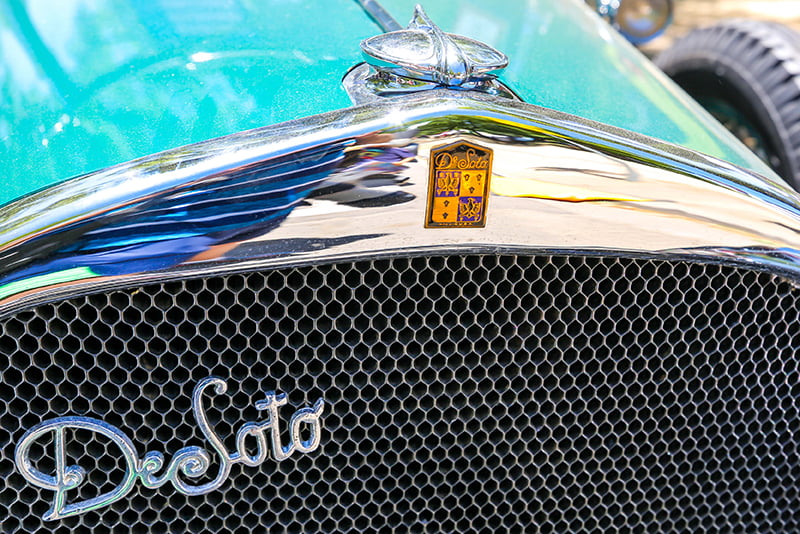Although more than two million cars and trucks bore the DeSoto brand in North American markets during its existence, that still didn’t stop the icon’s demise.
While DeSoto was an iconic manufacturer of automobiles in it’s own right, many people are unaware that it was also founded by Walter Chrysler himself in 1928, as a means to compete with the then titans of the mid-price class of the era, Pontiac, Studebaker, Hudson and Willys. Although DeSoto quickly made its mark in the industry, it’s success was short lived and only remained in production for a mere thirty three years – so where did it all go wrong?
A Brief History Of DeSoto Automobiles
Introduced for the 1929 model year, DeSoto served as a lower-priced version of existing Chrysler products. Dodge was positioned above DeSoto, while Plymouth was added as the entry level product within the Chrysler automotive hierarchy.
Despite being unaware of his many misgivings at the time, the marque was named after Hernando de Soto, a Spanish explorer who led the first European expedition into the modern day territories of Florida, Georgia and Alabama. The logo of the brand even featured a stylised image of the Spaniard himself.
The first models released were the DeSoto Sixties, with 81,065 single models produced. At the time, this was a first rear record in the United States, and this wasn’t eclipsed until many years later in 1960 by the Ford Falcon. However, after Chrysler’s acquisition of Dodge a short time later, the corporation found itself with not just one, but two mid market offerings that needed to be pushed. Despite the economic uncertainty of the time, DeSoto sales were relatively healthy, and equalled that of Dodge at around 25,000 units in 1932.
However, Chrysler went on to reverse the market positions of Dodge and DeSoto in 1932, positioning DeSoto above Dodge with the hopes of giving the latter a boost. As a result, DeSoto received Chrysler’s signature Airflow bodies but with a shorter wheelbase in 1934 – but the change was highly unpopular with consumers right around the nation. Without the other traditional models to fall back on like Chrysler, DeSoto was economically humbled by the experience until the arrival of the 1935 Airstreams.
After wartime restrictions on automotive production were ended, DeSoto returned to civilian car production when it reissued its 1942 models as 1946 models. With fender contours extending into the doors like other Chrysler products of the immediate post-war period, the notable difference was the exclusion of the hidden headlight feature used in the popular models released between the mid nineteen thirties until the war’s arrival. At the marque’s height of popularity, the most successful models were the Firesweep, Firedome and Fireflite.
By the time that the swinging sixties arrived, rumours were already circulating that Chrysler was about to move forward with the termination of the DeSoto brand. The limited model offerings in 1960 and the introduction of the lower priced Newport to the upscale Chrysler brand only enhanced suspicions that DeSoto was headed for the chopping block, with the discontinuation of the brand finally being announced on November 18, 1960.
Although DeSoto enjoyed a relatively long tenure as a successful mid-priced line for Chrysler Corporation, it’s ultimate demise can be attributed to a combination of corporate mistakes and external factors that extended beyond Chrysler’s control. Rivals at Ford and General Motors were powering ahead in the mid market sector, with the 1958 Recession only exacerbating matters.
On top of this, Chrysler’s own internal brand management during the 1950’s had essentially pitted the corporation’s five marques – Plymouth, Dodge, DeSoto, Chrysler and Imperial – against each other, with DeSoto notably suffering the most. Somewhat counterproductively, Chrysler had allowed its divisions to develop products targeting markets covered by their own sister divisions. Particularly with the introduction of the Newport, both Chrysler and Dodge began eating into DeSoto’s already compact market, with Chrysler’s upper management doing nothing to stop them. Despite its relatively short thirty three year tenure as an automotive production brand, DeSoto is still fondly remembered by many Americans and international car collectors alike.
Your Guide To Everything Classic Cars
Finding a fellow vintage auto enthusiast can feel a bit like finding a needle in a haystack, but rest assured that Classic’s Garage understands the thrill more than most. Having spent forty years collecting anything and everything from matchbox cars to hub caps, he’s successfully followed his passion to source, collect and stock beautiful and low mileage classic automobiles from around the world. With extensive experience in the automotive industry, it was only a matter of time before Wayne expanded on his love of vintage, iconic vehicles to share his knowledge and passion with the public.
Although his passion is for automobiles built before 1978, with a particular love for Buicks, Cadillacs, Lincolns, Oldsmobiles and even Fords, Wayne is just as passionate about the stories of the owners. Just like the cars, he has found that his fellow classic car enthusiasts all have wildly different attractions and logic behind their passion or hobby, and this often translates into how the car is presented. If it’s even remotely different, rare or just plain unusual, Wayne will overcome the relevant logistical and geographical challenges of bringing the cars to his showroom in Australia.
Classic’s Garage is a showroom conveniently located at Seventeen Mile Rocks, that specialises in the restoration and sales of vintage automobiles. If you’re on the hunt for Brisbane classic cars – quite simply, Wayne is your man. If you would like to arrange a viewing or inspect any other of our classic vehicles, please get in touch with us today.

